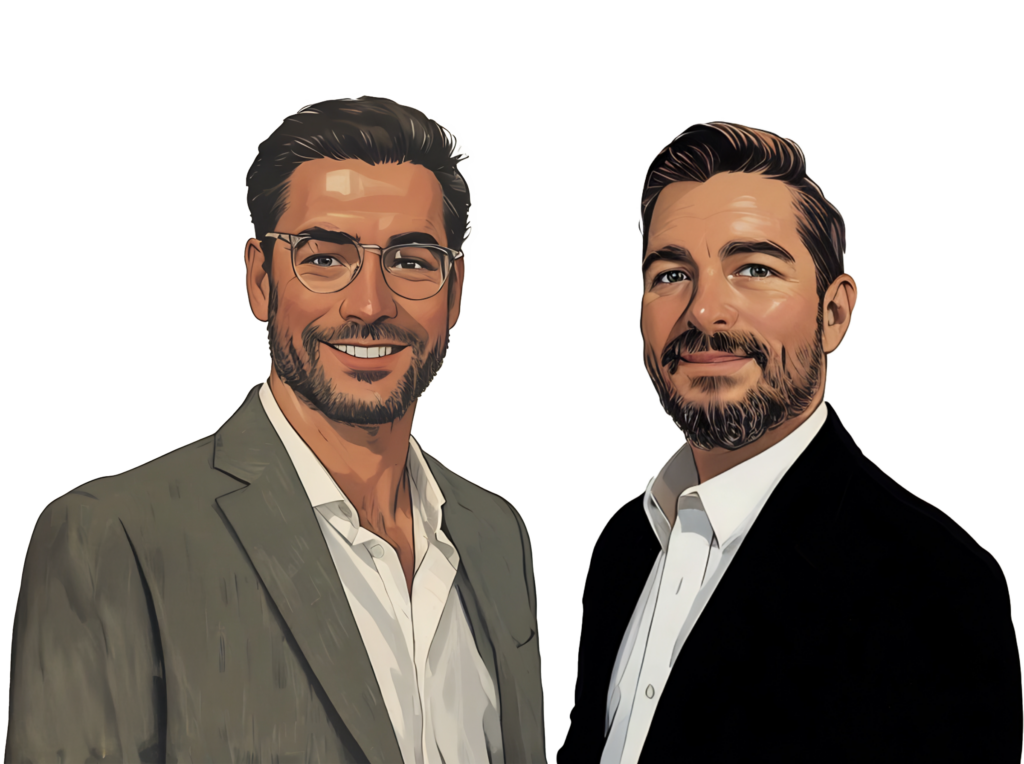The Hollywood Method: How to Structure Your Interview Success Stories for Maximum Impact (No Acting Skills Required)
You’ve just been asked about a time you faced a significant challenge at work. Your mind races, grabbing at random details as you cobble together a rambling response that somehow mentions three different projects, five coworkers, and ends with a vague “…so yeah, we got it done.”
The interviewer nods politely, makes a quick note, and moves on to the next question. Another missed opportunity.
Sound familiar? You’re not alone. According to research by TopInterview, 88% of hiring managers say that a candidate’s ability to tell a cohesive story about their experience significantly impacts hiring decisions—yet only 26% of candidates do this effectively.
Here’s the truth most career advisors won’t tell you: In interviews, how you structure your stories matters just as much as what you’ve actually accomplished. A mediocre achievement presented as a compelling narrative will outshine an impressive accomplishment told in a disjointed, forgettable way.
The good news? Effective storytelling isn’t an innate talent—it’s a learnable skill with a clear structure. That’s where the Hollywood Method comes in. This storytelling framework, adapted from screenwriting techniques, transforms ordinary workplace anecdotes into memorable narratives that showcase your value—no acting skills required.
Before diving into the specifics, grab our Job Interview Hack Sheet for additional techniques that pair perfectly with this storytelling approach.
Why Traditional Interview Advice Falls Short
We’ve all heard the standard guidance: “Use the STAR method” (Situation, Task, Action, Result). But this advice often leads to mechanical, uninspiring responses that check all the boxes but leave no impression.
Why? Because STAR provides a bare-bones structure without addressing what makes stories compelling. It’s like having the skeleton of a building without the architecture that makes people want to step inside.
A Princeton University study found that when information is presented as a story, listeners show significantly more brain activity than when the same information is presented as facts or bullet points. Stories don’t just deliver information—they create an experience that hiring managers remember long after the interview ends.
Even experienced professionals often struggle to translate their accomplishments into captivating narratives. They fall into the trap of either providing too much technical detail or speaking so generally that their unique contributions get lost.
The Science of Story: Why Our Brains Are Wired for Narrative
When you tell a story, something remarkable happens in the listener’s brain. Research from Uri Hasson at Princeton University shows that during effective storytelling, the neural patterns of the listener begin to mirror those of the speaker—a phenomenon called “neural coupling.”
In other words, good stories synchronize brains, creating a deeper connection than facts alone ever could. For job seekers, this means your interview stories don’t just inform hiring managers about your qualifications—they allow them to experience your problem-solving approach firsthand.
More importantly, stories trigger emotional responses that factual statements can’t match. Greg Stephens, a neuroscientist at Rutgers University, found that stories activate multiple brain regions simultaneously, including those responsible for emotional processing and memory formation.
This matters because hiring decisions are primarily emotional, then justified with logic afterward. A candidate who creates an emotional connection through storytelling has an inherent advantage over equally qualified candidates who can’t.
The Hollywood Story Structure: Your Secret Weapon
Hollywood has spent billions of dollars perfecting storytelling formulas that captivate audiences. The good news? You can apply the same fundamental structure to your interview responses.
The classic three-act structure forms the backbone of most successful films:
- The Setup: Establish the situation, characters, and stakes
- The Confrontation: Introduce challenges, obstacles, and tension
- The Resolution: Deliver the outcome, impact, and lessons learned
This structure works so well because it mirrors how our brains process experiences. It creates tension that demands resolution—keeping the listener engaged throughout.
When applied to behavioral interview questions like “Tell me about a time when you faced a significant challenge,” this structure transforms your answer from a mere recounting of events into a compelling narrative about your professional capabilities.
For a deeper dive into preparing behavioral interview stories, check out our guide on Building Your Behavioral Interview Story.
Interview Guys Tip: When selecting experiences to share, look for stories with natural dramatic elements—situations with clear stakes, visible obstacles, and meaningful outcomes. These convert most seamlessly into the Hollywood structure and create the most memorable impressions.
Act 1: The Setup – Creating Context That Matters
The beginning of your story sets the foundation for everything that follows. In Hollywood terms, this is where you establish the “world” of your story and what’s at stake.
An effective setup for an interview story should:
- Quickly orient the interviewer to the relevant context (company, project, your role)
- Establish what was at stake (business impact, client relationship, deadline)
- Create enough interest to make them want to hear what happened next
For example, instead of starting with “I was working on a project for a client,” try: “Six months into my role at ABC Marketing, our largest client threatened to leave after three consecutive missed deadlines. I was tasked with leading the turnaround effort with just two weeks to deliver their critical campaign.”
Notice how the second version immediately establishes the situation, the stakes, and your role—all in two sentences.
The key to an effective setup is selecting which details to include. Include only context that’s necessary to understand why the situation mattered. Cut everything else.
According to research from Harvard Business Review, the first 15 seconds of any communication disproportionately influence how the entire message is received. Make those seconds count by creating a setup that makes the interviewer lean in, not check out.
Act 2: The Confrontation – Showcasing Your Value
In screenwriting, the second act—the confrontation—is where the protagonist faces obstacles that reveal their true character. Your interview stories should function the same way.
This is where you detail:
- The specific challenges you encountered
- Your thought process for addressing them
- The actions you took and skills you deployed
- The obstacles you had to overcome
The confrontation isn’t just about what you did—it’s about revealing how you think. Interviewers are less interested in the specific actions you took than in understanding your problem-solving approach.
For example, rather than simply stating, “I created a new project timeline,” explain your thought process: “After analyzing the previous missed deadlines, I identified that our approval process was the bottleneck. I restructured the timeline to include dedicated review blocks and implemented a new feedback tracking system that prioritized critical path items.”
This approach allows the interviewer to witness your professional capabilities in action rather than just hearing claims about them.
The confrontation section also provides an opportunity to address potential weaknesses honestly. For guidance on tackling tough questions about shortcomings, see our article on answering What Is Your Greatest Weakness?
Interview Guys Tip: Strategic vulnerability strengthens your stories. Don’t be afraid to mention initial setbacks or challenges—these create tension that makes your eventual solution more impressive. As screenwriters know, a hero who overcomes obstacles is infinitely more compelling than one who never faces them.
Act 3: The Resolution – Proving Your Impact
The final act of your interview story is where you deliver the payoff—the results you achieved and their significance. This is where many candidates fall short, either understating their impact or failing to connect it to broader business goals.
An effective resolution includes:
- Quantifiable results (numbers, percentages, rankings)
- Broader impact on the team, company, or client
- Lessons learned or skills developed
- Recognition received (if applicable)
For example, instead of ending with “The project was completed successfully,” try: “We delivered the campaign two days ahead of the revised deadline with zero quality issues. The client renewed their annual contract—worth $1.2 million—the following week, specifically citing our turnaround as the deciding factor. This experience transformed how our team handles client feedback, and the tracking system I implemented has now been adopted across all major accounts.”
The resolution should leave no doubt about your value. Make the impact so clear that the interviewer can easily visualize you creating similar results in the role you’re applying for.
Research from the Journal of Applied Psychology indicates that specific, quantified achievements are 68% more likely to be remembered than general statements of success. Whenever possible, include concrete metrics that demonstrate the value you delivered.
The “Character Arc” – Your Professional Growth Story
Great Hollywood stories don’t just show external victory—they demonstrate how characters evolve through challenges. Your interview stories should do the same by including your professional growth.
This element is particularly powerful when discussing challenges or weaknesses. By showing how you’ve developed, you transform potential concerns into strengths.
For example, after describing how you resolved a situation with a difficult client, you might add: “That experience fundamentally changed my approach to stakeholder management. I now proactively establish communication frameworks at the start of any client relationship, which has helped me prevent similar issues on subsequent projects.”
According to research from Stanford University’s Carol Dweck, candidates who demonstrate a growth mindset—showing how they learn and develop—are rated significantly higher by interviewers than those who focus solely on innate abilities.
Interview Guys Tip: Create a cohesive narrative across your interview stories by showing progression in your skills and approaches over time. When possible, reference how earlier experiences influenced later ones. This creates a compelling “character arc” that distinguishes you from candidates with similar qualifications but less reflective ability.
Building Your Story Portfolio: The 7 Stories Every Job Seeker Needs
Just as Hollywood actors prepare for different roles, job seekers should develop a portfolio of stories that showcase various aspects of their professional capabilities.
At minimum, prepare clear stories about:
- Leadership/Initiative – Taking charge to solve a problem
- Challenge/Obstacle – Overcoming a significant barrier
- Mistake/Failure – Learning from something that didn’t go as planned
- Success/Achievement – Delivering exceptional results
- Teamwork/Collaboration – Working effectively with others
- Conflict Resolution – Navigating interpersonal challenges
- Adaptability/Change – Responding effectively to unexpected situations
Each story should be adaptable to answer multiple potential questions. For example, your leadership story might answer questions about initiative, decision-making, or project management depending on which elements you emphasize.
To see how these stories map to specific interview questions, check out our comprehensive Behavioral Interview Matrix.
By preparing these seven core stories, you’ll be equipped to handle virtually any behavioral question that comes your way—without memorizing dozens of different answers.
Delivery Techniques: Making Your Stories Captivating (Without Acting)
You don’t need acting abilities to deliver powerful interview stories. Instead, focus on these proven communication techniques:
- Strategic pacing: Slow down when describing important decisions or results
- Vocal variety: Avoid monotone delivery by varying your pitch and emphasis
- Purposeful pauses: Brief silences before key points increase their impact
- Concise language: Eliminate filler words and unnecessary details
- Engagement checks: Watch for the interviewer’s reactions and adjust accordingly
Research from MIT’s Human Dynamics Laboratory found that communication delivery accounts for up to 38% of message effectiveness, regardless of content quality. In other words, how you tell your story significantly impacts its reception.
That said, authenticity trumps performance every time. Instead of trying to “act,” focus on speaking naturally about experiences that genuinely matter to you. Your sincere connection to the story will translate into a more compelling delivery than any rehearsed performance.
Communication research from UCLA found that interviewers can detect insincerity with surprising accuracy—and it dramatically reduces their perception of a candidate’s trustworthiness. Authentic storytelling always outperforms polished but insincere delivery.
Practice Framework: From Rough Draft to Oscar-Worthy
Even Hollywood’s greatest stories go through multiple revisions before they’re ready for the big screen. Your interview stories deserve the same development process.
Follow this EDIT framework to refine your stories:
- Engage: Draft the basic outline using the three-act structure
- Develop: Flesh out each section with specific details and examples
- Impact: Enhance the resolution with concrete results and takeaways
- Trim: Remove any details that don’t strengthen your central message
After drafting your stories, record yourself telling them and listen critically. Are there places where you ramble? Points where the story loses focus? Cut ruthlessly until only the most impactful elements remain.
Preparation creates naturalness, not roboticism. By practicing your stories until their structure becomes second nature, you’ll be able to tell them conversationally rather than sounding like you’re reciting a memorized script.
Research on expert performance across fields consistently shows that structured practice is the difference between average and exceptional performance. The same principle applies to interview storytelling.
Lights, Camera, Interview Success
The Hollywood Method isn’t about turning you into someone you’re not—it’s about structuring your authentic experiences into stories that showcase your true value.
By adopting this proven storytelling framework, you’ll transform ordinary workplace experiences into compelling narratives that hiring managers remember long after the interview ends. You’ll create neural coupling, emotional connection, and memorable impressions that set you apart from equally qualified candidates.
The best part? These storytelling skills extend far beyond interviews. The ability to structure compelling narratives about your contributions will serve you throughout your career—in performance reviews, presentations, networking events, and leadership opportunities.
As you prepare for your next interview, remember that your experiences deserve to be told as vividly as any Hollywood blockbuster. You’ve lived them. You’ve earned them. Now tell them in a way that ensures they’re remembered.
Start building your story portfolio today. Your career’s next big scene awaits.

BY THE INTERVIEW GUYS (JEFF GILLIS & MIKE SIMPSON)
Mike Simpson: The authoritative voice on job interviews and careers, providing practical advice to job seekers around the world for over 12 years.
Jeff Gillis: The technical expert behind The Interview Guys, developing innovative tools and conducting deep research on hiring trends and the job market as a whole.






